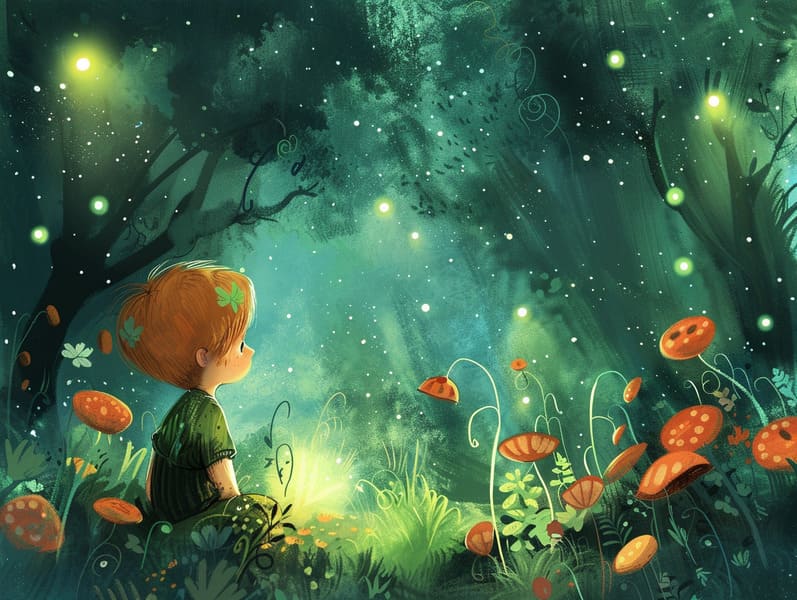The Inception of Fairy Tales and Their Steadfast Delight.
The Inception of Fairy Tales and Their Steadfast Delight.
Blog Article

Historical fairy tales have timeless appeal. These narratives have been whispered from one generation to the next far before they were ever written down. They sprang from a variety of backgrounds, including African traditions. They were initially passed along among older generations, often carrying themes and messages reflective of the societal norms and beliefs of the time.
The Grimm brothers, Jacob and Wilhelm, were among the first to assemble many of these beloved fairy tales. Their compilation, "Grimm's Folk Tales," included classics like "The True Bride," "The Story of Hansel and Gretel," and "Little Snow White," which have since become staples in the world of traditional fairy tales. Similarly, H. C. Andersen's magical tales, such as "The Mermaid," and "The Duckling's Story," have captured hearts worldwide, ensuring their place in the pantheon of iconic fairy tales.
Despite their age, these tales remain as applicable as ever, especially as children's bedtime stories. These whimsical stories are now available in various formats, including vividly illustrated books, fantastical animations, and digital storybooks.
Their lasting presence can be ascribed to several captivating elements:
Important Morals: Ancient fairy tales often provide important moral lessons. Narratives like "The Shepherd Boy and the Wolf" teach the importance of truthfulness, while "The Tale of the Tortoise and the Hare" underline the virtues of resolve and unpretentiousness. These tales offer the young clear distinctions between right and wrong, developing their moral compass in a soft yet important way.
Sympathy and Perception: Classic fairy tales frequently illustrate heroines facing challenges and problems, fostering listeners to comprehend with their struggles and champion their triumphs. For instance, "Beauty's Beast" demonstrates the significance of seeing beyond the surface to comprehend the true nature of a character, fostering kindness and knowledge.
Cultural Recognition: Many timeless fairy tales are rooted in the cultural contexts from which they sprang. Engaging with these stories can provide intriguing perspectives into different historical contexts, advancing a sense of cultural appreciation and recognition.
Fantasy and Innovation: The fantastical elements in traditional fairy tales—fairy godmothers—provoke children’s innovations. These narratives move readers to fantasy realms, fostering imaginative ideas and a sense of mystery that stays a lifetime.
Traditional fairy tales are not only alluring but also instructive. They work as entrancing tools in enhancing various cognitive and emotional skills in little ones. When timeless fairy tales are read aloud, they advance language proficiency by introducing new vocabulary and intricate sentence structures. This practice also advances auditory skills and mindfulness, as young readers keep up with the story, ready to see what happens next.
Furthermore, exploring the themes and characters of old fairy tales can advance thought processes and intellectual skills. Children are instructed to spot patterns, anticipate outcomes, and catch on to cause and effect. These examinations also contribute to the young verbalize their thoughts and feelings, advancing their emotional intelligence.
In today’s digital age, the proliferation of internet fairy tales has made these fairy tales more within reach than ever. Internet sites and software feature large libraries of timeless fairy tales that can be viewed or played anytime, anywhere. Fairy tales voiced are particularly well-liked, sharing an charming way for the young to delight in these spellbinding stories. Spoken stories and read-to-me stories carry characters and settings to life, often augmented by mesmerizing harmonies and musical scores that enhance the tale experience.
The unending appeal of classic fairy tales lies in their ability to change to the present while staying true to their essential themes. Contemporary retellings of these stories often spotlight more inclusive protagonists and modern settings, making them relevant to today’s audience. However, the central morals of guts, warmth, and integrity remain unchanged, continuing to reach audiences of all ages.
Ancient fairy tales also offer a sense of peace and predictability. They bequeath a well-ordered narrative with a evident beginning, middle, and end, often coming to a close with the conclusion of conflicts and the triumph of virtue over wickedness. This regularity can be calming for the young, sharing a sense of unchangeability in an constantly changing world.
Old fairy tales continue to fascinate and train new generations, maintaining their magic and applicability in modern society. As children's night stories, they deliver a perfect blend of fascination and comprehension, encouraging moral values, empathy, and creativity. The availability of online fairy tales and the this site in demand status of fairy tales read out loud validate that these classic narratives remain obtainable to new generations.
By continuing and relating these tales, we continue to appreciate the rich tapestry of folklore and cultural heritage. Whether you are enjoying a gorgeously illustrated book, exploring a electronic collection, or listening through an read-aloud story, the splendor of traditional fairy tales is always within reach. These fairy tales convey of the immortal nature of narratives and its ability to unify us across generations and cultures.
Regardless if you are perusing a vibrantly illustrated book, perusing a cyber collection, or listening to an spoken story, the attraction of children's fairy tales is always within reach.
These fairy tales remind us of the unwavering nature of narratives and its ability to bond us across time and space, establishing a link that delights and instructs alike.